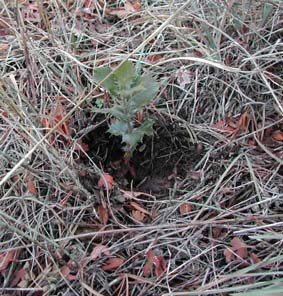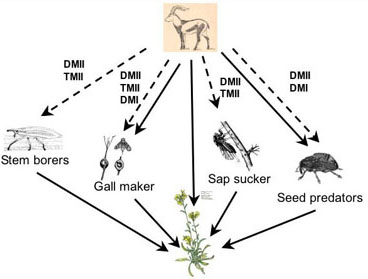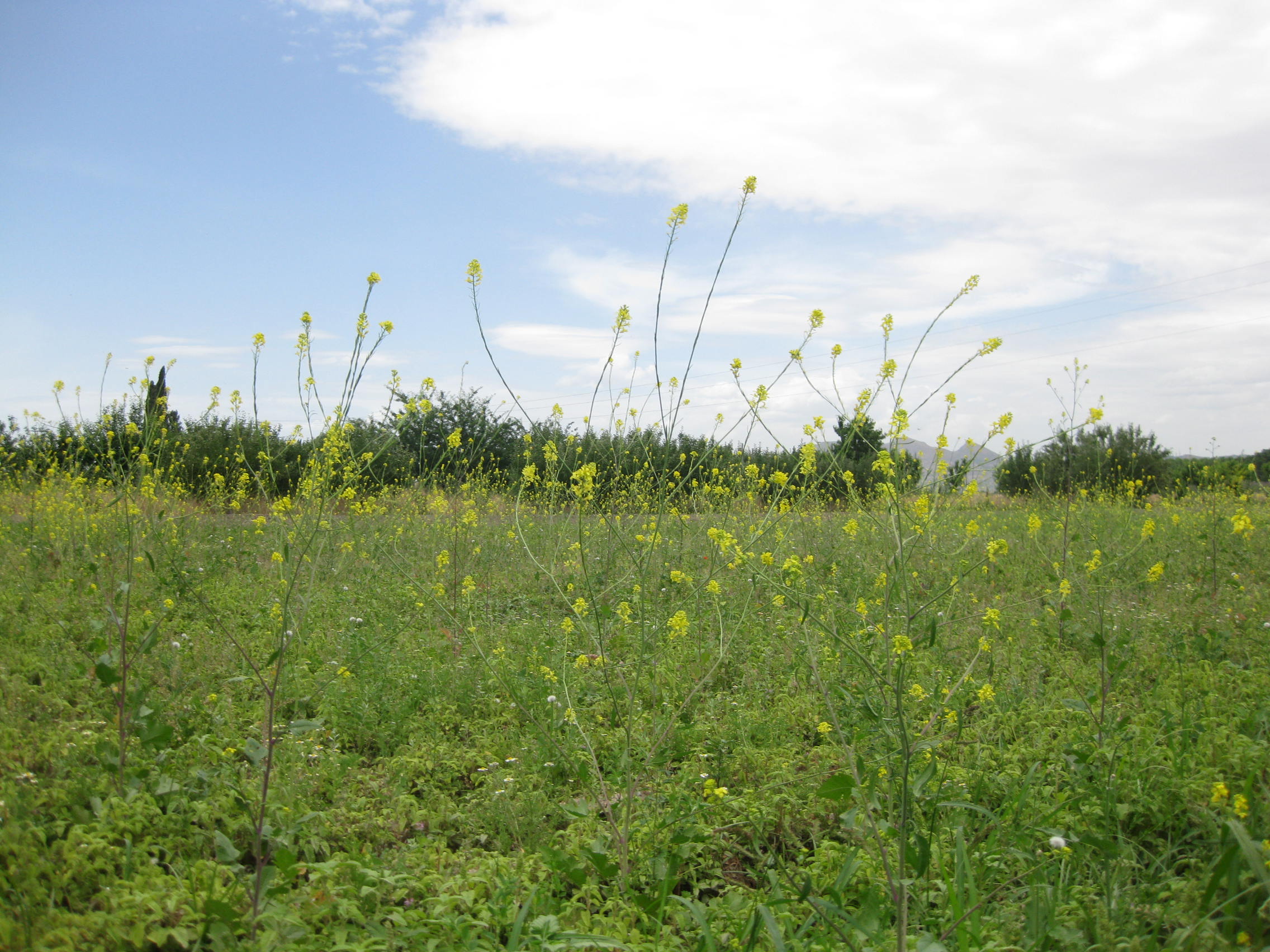Evolutionary Ecology of the interaction between plants and pollinators
I am currently studying the ecology, genetics and evolution of the interaction between plants and pollinators. This work is conducted in collaboration with Dr. Francisco Perfectti (Dpt of Genetics, UGR), Dr. Juan Lorite (Dpt of Botany, UGR) and Dr. Jordi Bosch (CREAF-UAB). Our approaches include a wide range of techniques in the field (large scale, spatially-explicit and GIS-based observations, experiments), the greenhouse and the lab (e.g., geometric morphometrics to determine corola shape, DNA sequencing, AFLPs, microsatellites, etc., etc.) as well as theoretical modeling. As model systems, most of our research is carried on Brassicaceae, mostly on Erysimum, although we also work with other crucifers, like Brassica, Moricandia, etc. Visit www.evoflor.org for additional information.

Regeneration ecology of Holm-oak: linking landscape, spatial and population ecology
Understanding which factors modulate natural regeneration of populations is a key question in ecology. During the last decade I have studied the regeneration ecology of Holm oak Quercus ilex, an evergreen Mediterranean oak inhabiting heterogeneous landscapes. This work has been conducted in collaboration with Dr Eugene W. Schupp (Department of Rangeland Resources, Utah State University) and Dr. Carolina Puerta Piņero (Dpt of Ecology, UGR). Specifically, we are interested in linking seed dispersal by rodents and jays with seedling establishment and plant demography using spacially-explicit approaches. We have found that the functional connectivity of this system is shaped by plant-animal interactions. Jays are very efficient dispersers, promoting the colonization of new areas and enhancing connectivity between oak patches. Rodents have a dual role as disperser and predators, acting at a local scale. Ungulates diminish acorn rain after dispersal and restrain juveniles development. Thus, we think that the landscape is a heterogeneous and dynamic scenario in which some areas have an active oak regeneration while others have a regression or stabilization of oak populations.

Interaction between ungulates and insects: trait-mediated and density-mediated interactions
Food web theory has been profusely developed during the last fifty years. Consequently, much is known about how food webs are structured and on the effect of different organisms in its functioning. However, most theoretical treatments as well as empirical approaches have continually ignored the evident existing connection between vertebrate and invertebrate food webs. In collaboration with Dr. Adela González Megías (Dpt Animal Biology, UGR), I am explorign the effect of herbivory by ungulates on the performance, abundance and population dynamics of co-ocurring phytophagous insects, . We think that this overlooked interaction that presumably has strong effect on the functioning of terrestrial ecosystems. We have used as model systems to develop this research the plants Hormathophylla spinosa and Erysimum mediohispanicum (Brassicaceae).

Evolutionary ecology of invasive species
There are increased interests in studies of invasive species due to possibilities of some invaders having strong negative impacts on natives. Invasive species feed on, compete and hybridize with the natives to the disadvantage of the natives. Consequently, invasive species could cause loss of native species and loss of ecosystem services like water filtration, soil stabilization and control of pests. Furthermore, the invaders can be pests of crops. There is, therefore, a need to understand mechanisms that underlie invasiveness of various species. In collaboration with Dr Sharon Y. Strauss (Ecology and Evolution, University of California at Davis) and Dr. Rodrigo Medel (Dpt of Ecology, Universidad de Chile), I am presently using Brassica nigra (Brassicaceae), a native of the Mediterranean region, as a model plant to investigate ecological and evolutionary mechanisms that enable it to invade North and South America.